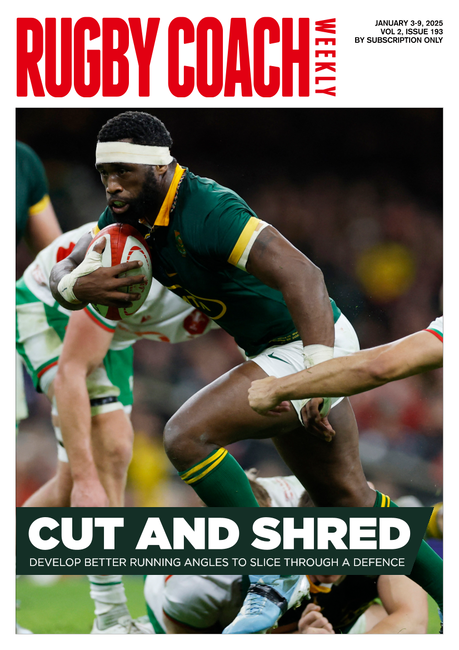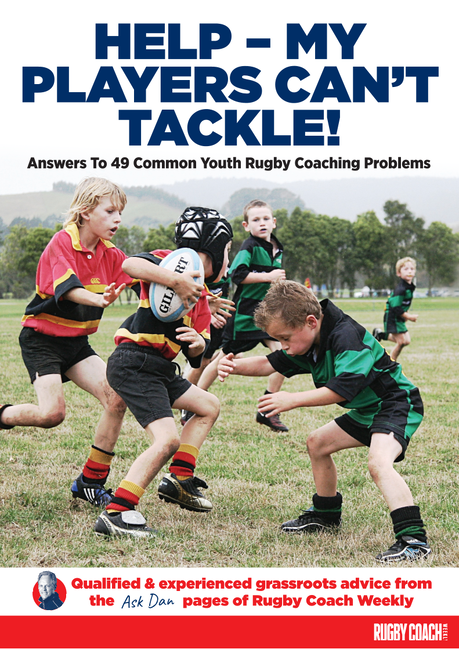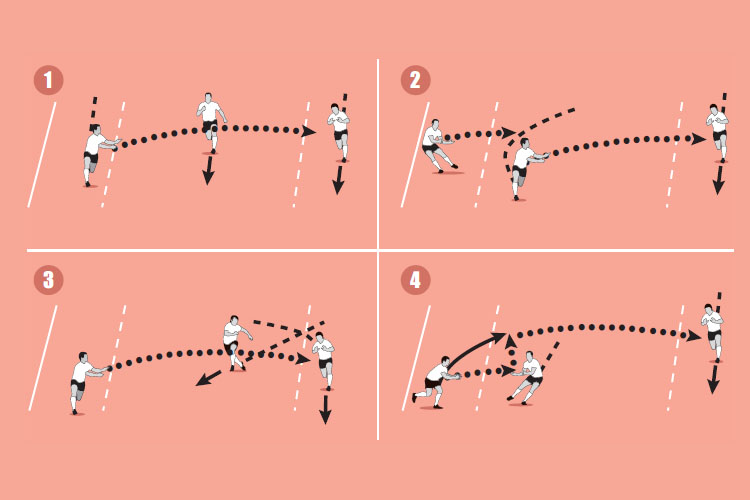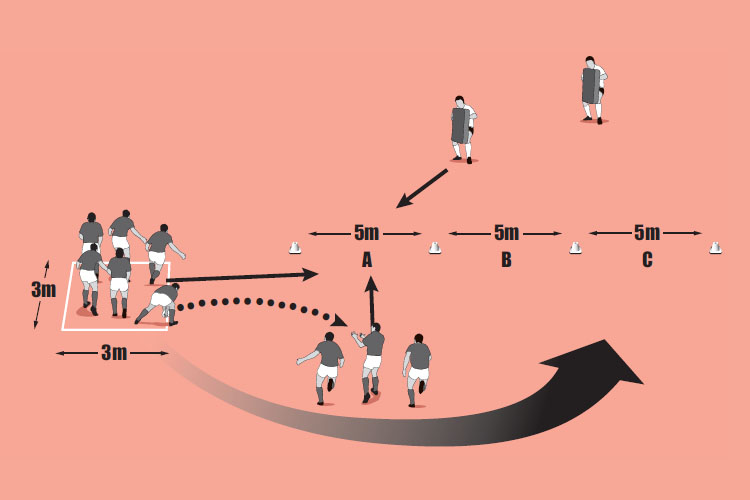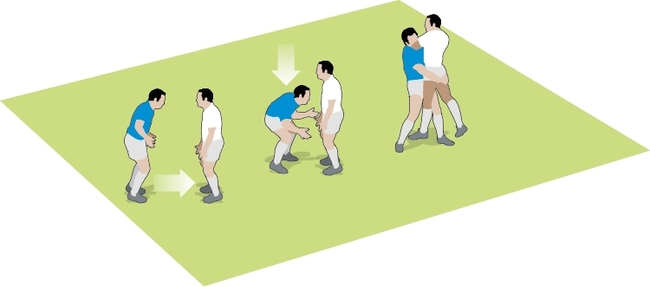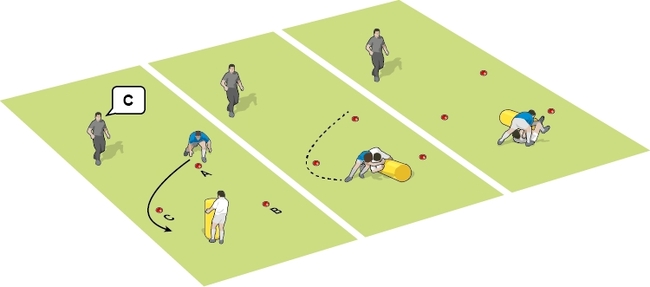Block and tackle
Individual defenders have to react quickly to changes in potential ball carriers. This is because attacking teams use “blockers” and dummy runners to fool defences. A “blocker” runs flat and sometimes in front of the pass. This session develops a defender’s ability to slide on to the ball carrier, sometimes at the last moment.
Warm up time: 7-10
Session time: 10-15
Development time: 10-15
Game time: 15-20
Warm down time: 7-10
What to think about
What height should players be tackling at? Given the late reactions to the situation, players should use low-risk tackles, aiming at thigh height. Players must keep their eyes open and be balanced before contact. What sort of communication will your defenders be using? The defence needs to focus on keeping consistent spacing, since there is more than one line of attackers. Communication is required as the defenders shift sideways as well as up. Though the defence needs to move up at the same time and close down the opposition attack, the defence also needs to move across together.set-up
- Stay balanced and commit to the tackle when you are sure of your target.
- Step into the tackle with your eyes open.
What you get your players to do
Put two players with ruck pads 2m apart. Set up a defender no more than 2m from the defenders. Another player with a ball stands 3m to one side. The ball carrier passes the ball at one of the pads and the defender has to tackle that pad before the ball hits the ground. Change sides, make the defender stand closer or farther away, remove the pads and finally have the players run on to the ball (see picture 1).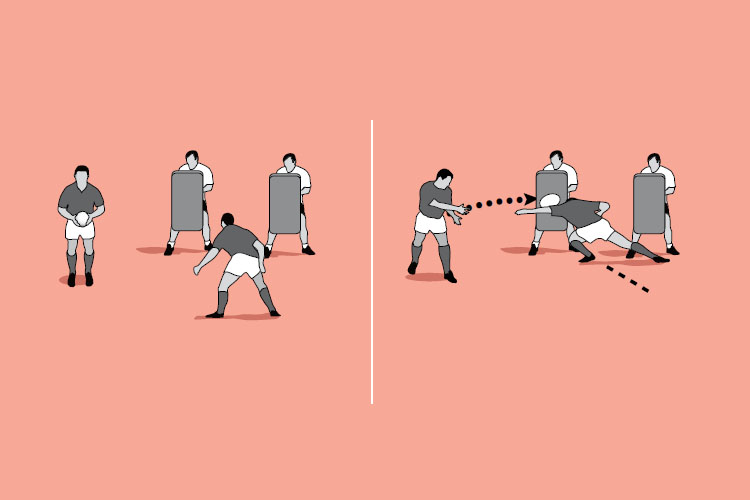
Development
Five players stand 3m apart holding pads. Three attackers (A1, A2 and A3) stand behind them, with a scrum half to one side. Two defenders (D1 and D2) stand 2m in front of the pads. The attacking team runs forward, passing a ball down the line. The defenders can only tackle the ball carrier once they have gone beyond the pads. The attacking team can go through any gap (see picture 2).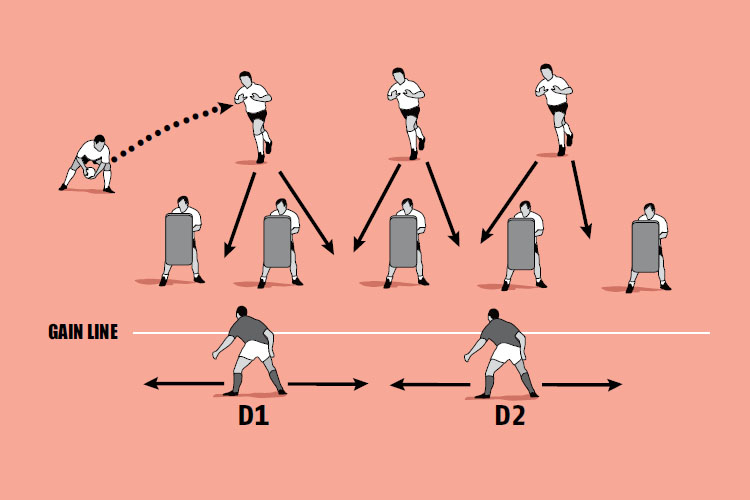
Game situation
Set up a 6v3 game. The attack (A1 to A5) lines up with a scrum half, three players in a line, and two in front. The defence starts 2m back from a “gain line”. The ball is passed out and the defenders (D1, D2 and D3) have to react to either a pass to one of the players in the front line, or a move from the players in the line behind (see picture 3).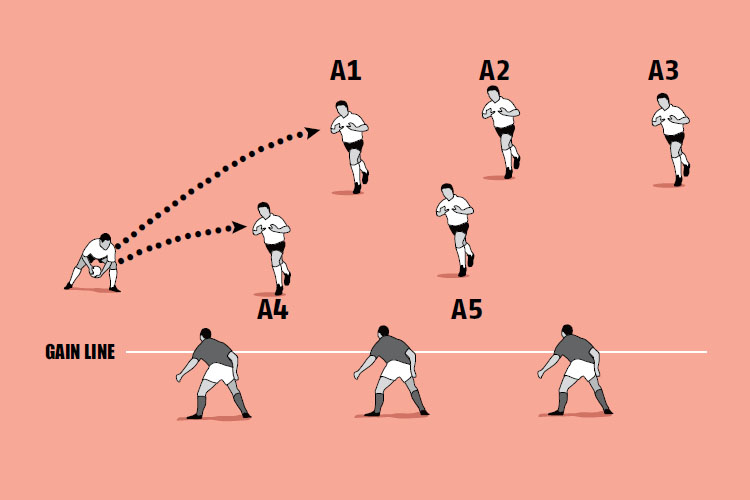
What to call out
- “Head up and keep your feet moving before making a decision”
- “Don’t get too low before moving into the tackle”
- “Listen to your team in defence. Give clear instructions”
- “Finish the tackle and compete for the ball”
Premium Books
Newsletter Sign Up
Coaches Testimonials

Gerald Kearney, Downtown Las Vegas Soccer Club

Paul Butler, Florida, USA

Rick Shields, Springboro, USA

Tony Green, Pierrefonds Titans, Quebec, Canada
Subscribe Today
Be a more effective, more successful rugby coach
In a recent survey 89% of subscribers said Rugby Coach Weekly makes them more confident, 91% said Rugby Coach Weekly makes them a more effective coach and 93% said Rugby Coach Weekly makes them more inspired.
Get Weekly Inspiration
All the latest techniques and approaches
Rugby Coach Weekly offers proven and easy to use rugby drills, coaching sessions, practice plans, small-sided games, warm-ups, training tips and advice.
We've been at the cutting edge of rugby coaching since we launched in 2005, creating resources for the grassroots youth coach, following best practice from around the world and insights from the professional game.


